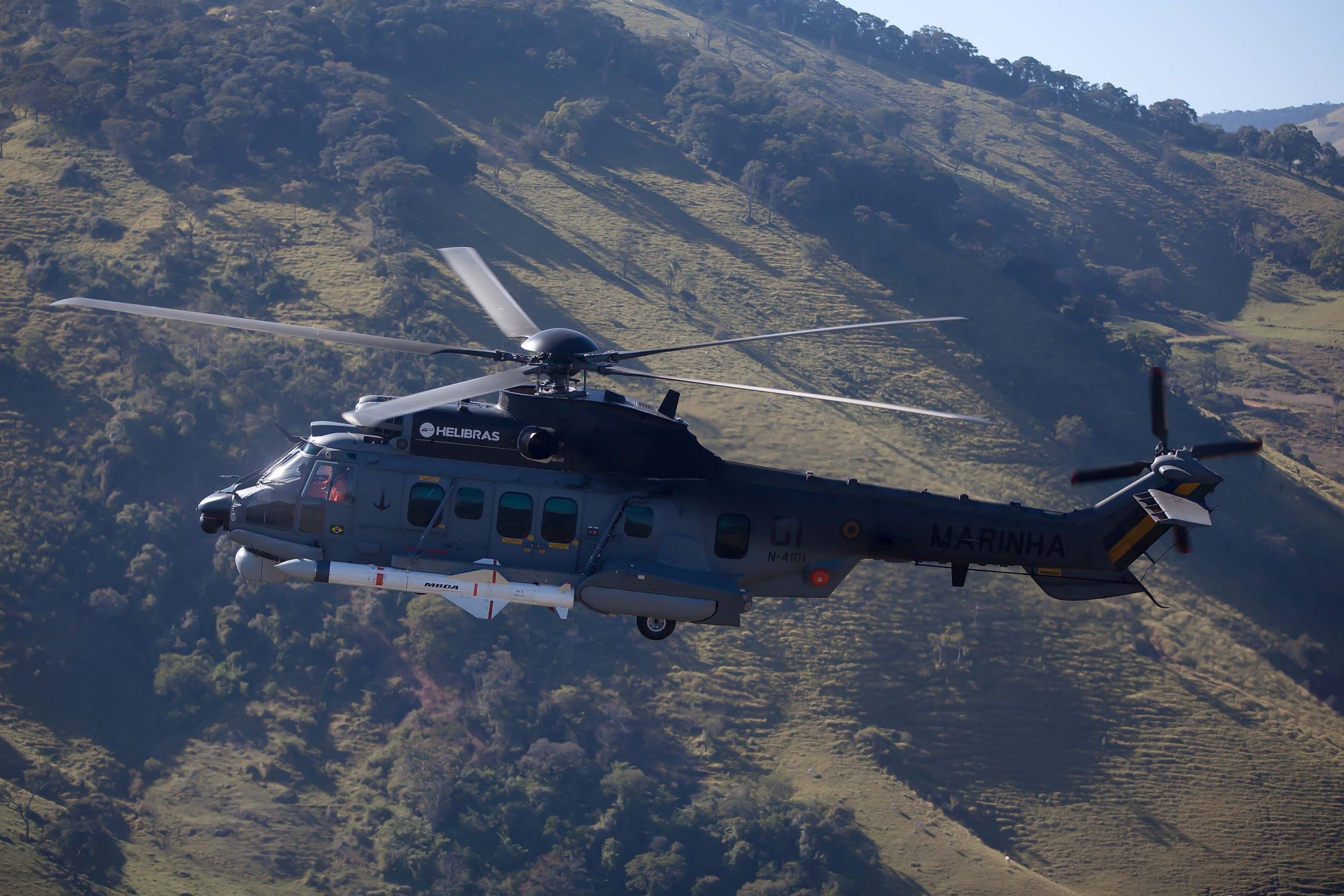
SHAH ALAM: Brazil has taken delivery of the first naval configured Airbus H225M medium-lift helicopters. The helicopter is equipped for naval duties which include radar and defensive aids sub-system allowing it conduct maritime surveillance and anti-surface warfare. The anti surface warfare capability to carry and fire anti-ship missiles. The missile is the MBDA Exocet AM39 B2M2 missile.
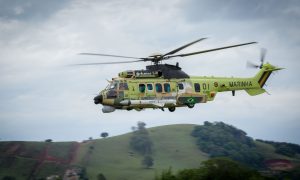
From Airbus
Airbus Helicopters has delivered the first H225M in naval combat configuration to the Brazilian Navy. Stationed at the naval base in São Pedro d’Aldeia, the aircraft will boost the Brazilian Navy’s mission capabilities including anti-surface warfare and maritime surveillance.
Developed by the engineering team at Helibras (the Brazilian subsidiary of Airbus Helicopters), this naval version of the H225M aircraft is the most complex configuration that has ever been produced for this multirole helicopter. The aircraft’s embedded systems include the EWS IDAS-3 (countermeasure system), MBDA Exocet AM39 B2M2 missiles, the APS143 tactical radar and the naval mission system N-TDMS (Naval Tactical Data Management System) developed in partnership with Atech and Airbus Defense and Space, which is responsible for making the command and control of all embedded systems, including the missile system.
“We are very proud of this achievement, which proves the industrial and technological capability of the Airbus Helicopters teams in France and Brazil to deliver one of the most modern solutions in the world to the Brazilian Armed Forces,” said Alberto Robles, Head of Latin America at Airbus Helicopters. “Designed to meet the most demanding requirements of the Brazilian Navy, the advanced anti-surface warfare and tactical capabilities open new mission capabilities for the H225M utility helicopter.”
The last stage of the firing campaign with the Exocet AM39 B2M2 missiles was successfully carried out last June, representing a major milestone in the programme, which led the way to qualification and delivery.The naval H225M is part of the contract signed by the Brazilian government in 2008 and which includes 50 H225Ms to be operated by the three armed forces. So far, 39 H225Ms have been delivered to the Brazilian Armed Forces, all of them assembled locally by Helibras
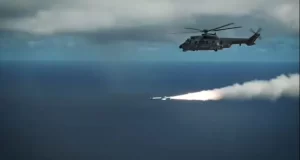
From the above statement it remains to be seen whether the Brazilian H225Ms will be fitted for anti-submarine warfare however. The Brazilian Navy already operates the Leonardo Super Lynx and Sikorsky SH-60 Seahawks for ASW.
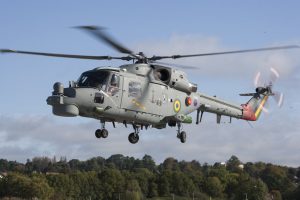
— Malaysian Defence
If you like this post, buy me an espresso. Paypal Payment

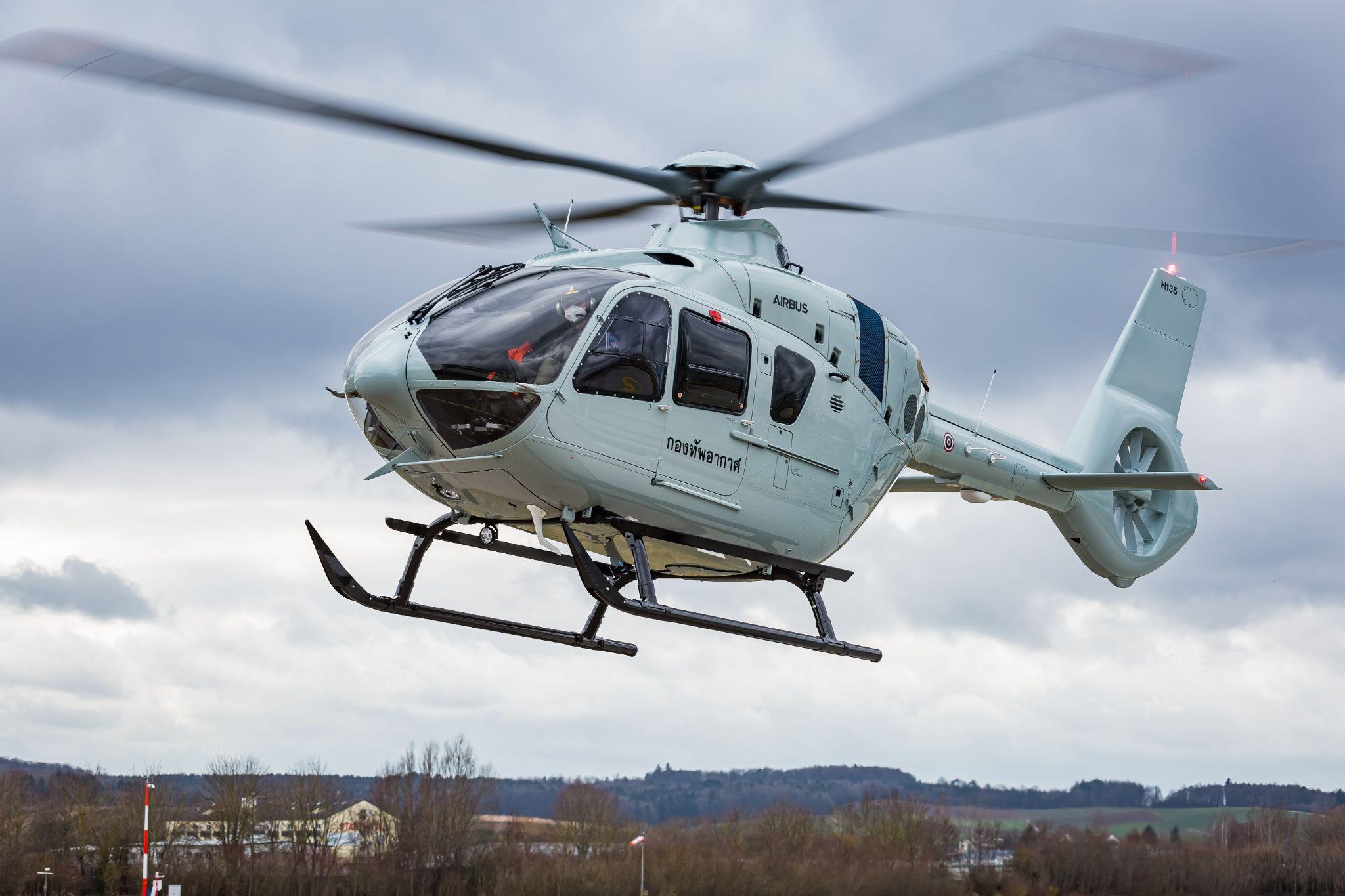

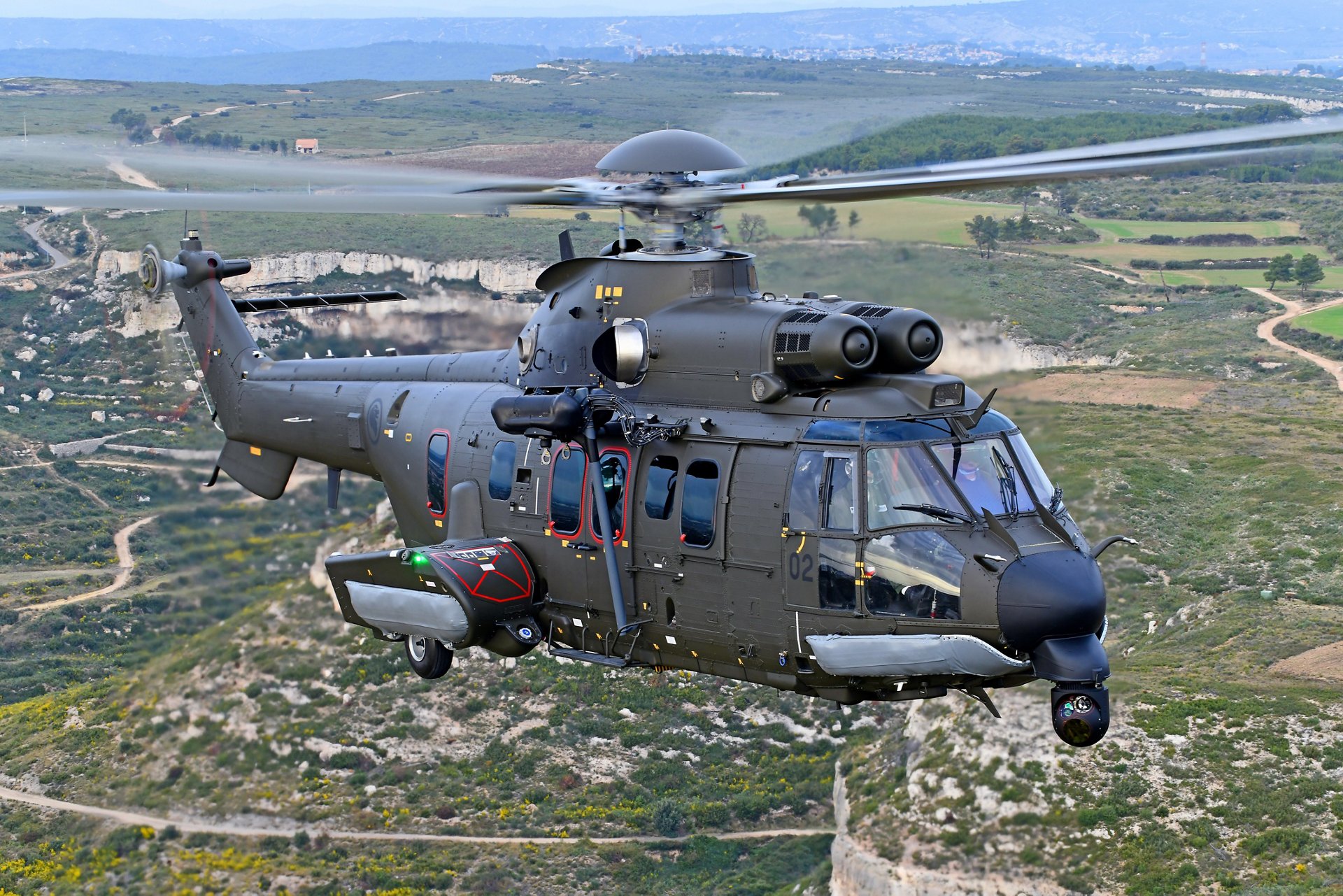
Congrats to brazil for such achievement. Whether such helis is suitable for Malaysia is a whole diff story.
Well we need a ASW platform with the needed range, endurance and lift capacity to carry a dipping sonar, torps and sonobuoys. It will have to operate away from the ship for quite a distance and ASW is time extensive.
The Wildcat is incapable and the Romeo is unaffordable so that leaves a navalised Cougar as an option.
Azlan – “It will have to operate away from the ship for quite a distance and ASW is time extensive.”
Which is why we should look at options other than to use a helicopter for most of the time.
Romeos cost 100 million dollars each. So can we think out of the box? What other option that we can do that can operate away from the ship for quite a distance for a long period of time?
For ease of maintenance, the helicopter should be considered from Airbus or Leonardo only as both have their MRO centre here. For Leonardo about the only sensible choice AW101 as AW159 is mainly configured for anti ship warfare and need to pay extra for ASW version. From Airbus the navy can consider either H225M or the more proven Panther
Even then the choice is basically either the H225M or panther as the helipads in navy’s ships are simply not big enough for AW101
– The Panther was selected by the TNI-AL as a ASW helo but it simply does not have the range, endurance or lift capacity for the task [even the Wasp was certified to carry torps or depth charges]. A ASW helo must have the capability to fly a certain distance carrying its crew, fuel, torps and sonobuoys. It must have enough fuel to be in the area for some time to conduct a search and to deploy and winched up its sonar; ASW is time extensive. It also needs enough fuel to get back; often in adverse weather conditions.
– The issue with EH101 is not only its size but also its price tag due to the 3rd engine. We can safely rule this option out.
– The RMN might end up getting the Wildcat. It’s a great helo but due to inherent limitations is simply not up to the task of ASW; unless circumstances dictate the engage is short and at close range [unlikely]. It can carry a dipping sonar and a torp but even then only for a short period over a short distance. There is also no space for sonobouys if a torp and sonar is carried. A way around this could be to deploy a pair; one with torps and one with a dipping sonar; not a practical method.
At present there is no alternative to an embarked ASW helo. Standoff ASW weapons; MPAs and unmanned surface vessels operate in different operational conditions. They can supplement but hardly replace a ASW helo. In years to come UASs will be configured for ASW but that time hasn’t come yet.
Off topic.
The AV-8. Squire and Vintaqs are mounted on the same vehicle right? Squire a ground radar and Vintaqs an optronic sight.
– Yes AW159 Wildcat does not have the lifting capacity and payload as a AW101 Merlin. but is a Merlin an overkill for us? Okay let’s go through 1 by 1
– A logical scenario would be these ASW helicopters mostly operate from LCS, LCS has CAPTAS-2 towed sonar array with an open source max range of 60km
– Unlike the Italian and French FREMMs which uses the CAPTAS-4 which has twice the range of CAPTAS-2, they could fully take advantage of NH90’s longer endurance. Also not that UK Type 23 frigate operates both CAPTAS-4 and Wildcats.
– MPA from Kuantan or Labuan could also be used for deploying sonobuoy at longer ranges if needed.
– Another question is can even RMN afford to by even 2 Merlin or NH90? Even though Wildcat is not the best option out there, it still might be the right for RMN.
– Yes I know someone out there will point out the ‘neither here nor there’ phrase
– Another option, albeit still more expensive than Wildcats are the MH60R.From what I can find, a single ASW MH60R is priced from usd50-82 million each while a Wildcat is from usd46-57 million. I am not sure why the MH60R priced vary that much with Greece being the cheapest. These price I quoted does not included weapons.
Vingtaqs II is the name Rheinmetall called the reconnaissance and surveillance system. The Squire is the radar that was offered with the system when we bought it
Luqman – “it still might be the right for RMN.”
If it was the RMN would not have identified a need for a bigger platform.
Luqman – ” Another option, albeit still more expensive than Wildcats are the MH60R”
That is the RMN’s prefered choice but apart from Wildcat, the only realistic option really is Cougar.
Luqman – “but is a Merlin an overkill for us”
Not an “overkill” in the operational sense but too exprnsive to buy and too large to fit in any hangar we have.
Luqman – “– MPA from Kuantan or Labuan”
If they are available and if they are networked to the helo.
Luqman – “Yes I know someone out there will point out the ‘neither here nor there’ phrase”
It’s actually not the “neither here nor there” cliche but the “something better than nothing” one which is often loosely applied.
The “better” part would only apply if that “something” can do its job but if it can’t it’s not “better” but actually “nothing” – subjective In this case if a ASW helo does not have the range and endurance to get to where it has to and to stay there for a while to locate a target and to engage it and can’t carry torps, sonobuoys and a dipping sonar, then it’s not up to the task.
Luqman -“that UK Type 23 frigate operates both CAPTAS-4 and Wildcats”
Wildcat like Lynx [even Wasp was certified] in RN service can carry torps but the main ASW rotary platform is Merlin and prior to that Seaking.
Luqman-” logical scenario would be these ASW helicopters mostly operate from LCS”
Not a “logical” but intended scenario,from Day One.
Luqman – “Italian and French FREMMs which uses the CAPTAS-4 which has twice the range of CAPTAS-2″
A lot would depend on the operating environment. In open and deeper waters sub detection would be easier. In confined [littoral]shallow waters with a lot of ambient noise a long range sonar might not necessarily provide a key advantage.
Also, French and Italian ships would be tied in to other NATO assets like underwater sensors, ISR, SIGINT, MPAs, etc, that is an advantage they would have – a key advantage they would have.
Luqman – ” I am not sure why the MH60R priced vary”
It can vary depending on the training package, spares, documetation, etc.
Luqman – “Wildcat is not the best option out there, it still might be the right for RMN”
It might well turn out to be the only affordable and poltically acceptable option. A great platform which unfortunately has inherent issues with performing ASW.
@Azlan
“In confined [littoral]shallow waters with a lot of ambient noise a long range sonar might not necessarily provide a key advantage.”
Yet we do operate in deeper parts of SCS specifically south part of Spratly islands which is well within our EEZ with possible depths up to 3km
https://www.researchgate.net/profile/Gang-Wang-37/publication/275057501/figure/fig1/AS:306829054758912@1450165155038/Map-of-the-South-China-Sea.png
https://upload.wikimedia.org/wikipedia/commons/d/de/South_China_Sea_claims_map.jpg
“the only realistic option really is Cougar”
This begs the question, will the ASW Cougar still be cheaper than MH60R, same price or even more expensive than MH60R?
The Wildcat may not be the perfect ASW helo, but all of it’s shortcomings can be covered if an MPA can work together with it. (yes of course if share the same network or comms, if the MPA is available, if the MPA was equipped with ASW capability or at least carry sonarbuoy and if RMN and RMAF intended to operate like so). Don’t get me wrong I am all for MH60R if can
Right now there is actually dozens of excess MH-60R that we could get through US EDA. Yes I am also all for MH-60R if can.
http://www.thedrive.com/the-war-zone/26395/the-navy-has-dozens-more-mh-60r-helicopters-than-it-needs-due-to-lcs-debacle
The reality is that we are actually doing ASW in our own waters and EEZ, with coral reef station in those deep water spratly areas. ASW helicopters should not be our a major part of our ASW arsenal to track adversary submarines. Yes we need our Gowinds to have ASW helicopters, but to help the Gowinds tracking and shadowing those subs we should use stuff that does not need to fly.
“This begs the question, will the ASW Cougar still be cheaper than MH60R”
Good question and I’m assuming it is but could be wrong. I know that at least 30 percent of the ovetall cost will go to ASW gear, not including torps and sonobuoys. A buy will also be under FMS, extra costs but worth it for product support.
And advantage the Romeos have is commonality with the USN and RAN, both we train regularly with. Another is that in emeegencies spares are stockplied in the region, unlike the Cougar.
”Yet we do operate in deeper parts of SCC”
We do but for the most part the Straits of Melaka; Singapore Straits, and other places are mostly shallow; which presents it own set of challenges compared to deep water ASW. I was also making the point that a sonar’s range might not necessarily be a deciding factor or a key advantage depending on operational conditions.
”but all of it’s shortcomings can be covered if an MPA can work together with it. ”
Yes it can but we simply can’t base our planning on it. MPAS are few in number and will conducting ops in different [further places] and in under different circumstances/conditions. If it’s available then yes it can be used to supplement a ASE helo; only if it’s available but this doesn’t change the fact that a ASW rotary platform equipped for the task is needed and it’s shortcomings will not always be mitigated by the presence of a MPA.
MH-60R still the best for ASW role but Cougar just an option..
gonggok – ”but to help the Gowinds tracking and shadowing those subs we should use stuff that does not need to fly.”
‘Tracking and shadowing” [actually localising, persecuting and engaging] are precisely the role of organic/embarked ASW helos; why they exist; why navies have them and why the RMN has a requirement for them.. There is nothing ”that does not need to fly” which can fill in the void; especially not in our context. Not seabed sensors, not anything else which you may have imagined.
”The reality is that we are actually doing ASW in our own waters and EEZ, with coral reef station in those deep water spratly areas.”
The ”reality” is that most of our waters [whether territorial or the EEZ], including parts of the Spratlys are shallow. Parts of the Spratlys; especially past the continental shelf; are indeed deep; as are parts of the northern entrance to the Melaka Straits from the Andaman Sea but most are shallow. In many parts subs can actually be seen in the air and in some parts subs can’t even submerge.
Caracal + Exocet is one mighty strong combination that the RMN needs but do not have. Heck,there’s many ships that the RMN needs but do not have at the moment.
zainal – ”Caracal + Exocet is one mighty strong combination that the RMN needs”
You think so? A Caracal/Cougar/Puma can only carry one Exocet and when doing so is unwieldy and has a limited range. I can see a need for future helos to have a short range ASM [to replace Sea Skua] to be used against certain types of targets in a littoral setting bur not for a helo eqpuiped with a larger missile in the Exocet category.
Looks like Aussies are going to discard its MRH90 Taipan soon, to be replaced with new blackhawks. Ironic as they bought the MRH90 to replace their old blackhawks in the first place. It must be a big unsurmountable defect with the MRH90 that makes australia discard a very new helicopter and decide to buy another helicopter to replace it.
This comes after even germany is looking to discard its Tigers, like australia to be replaced with Apaches.